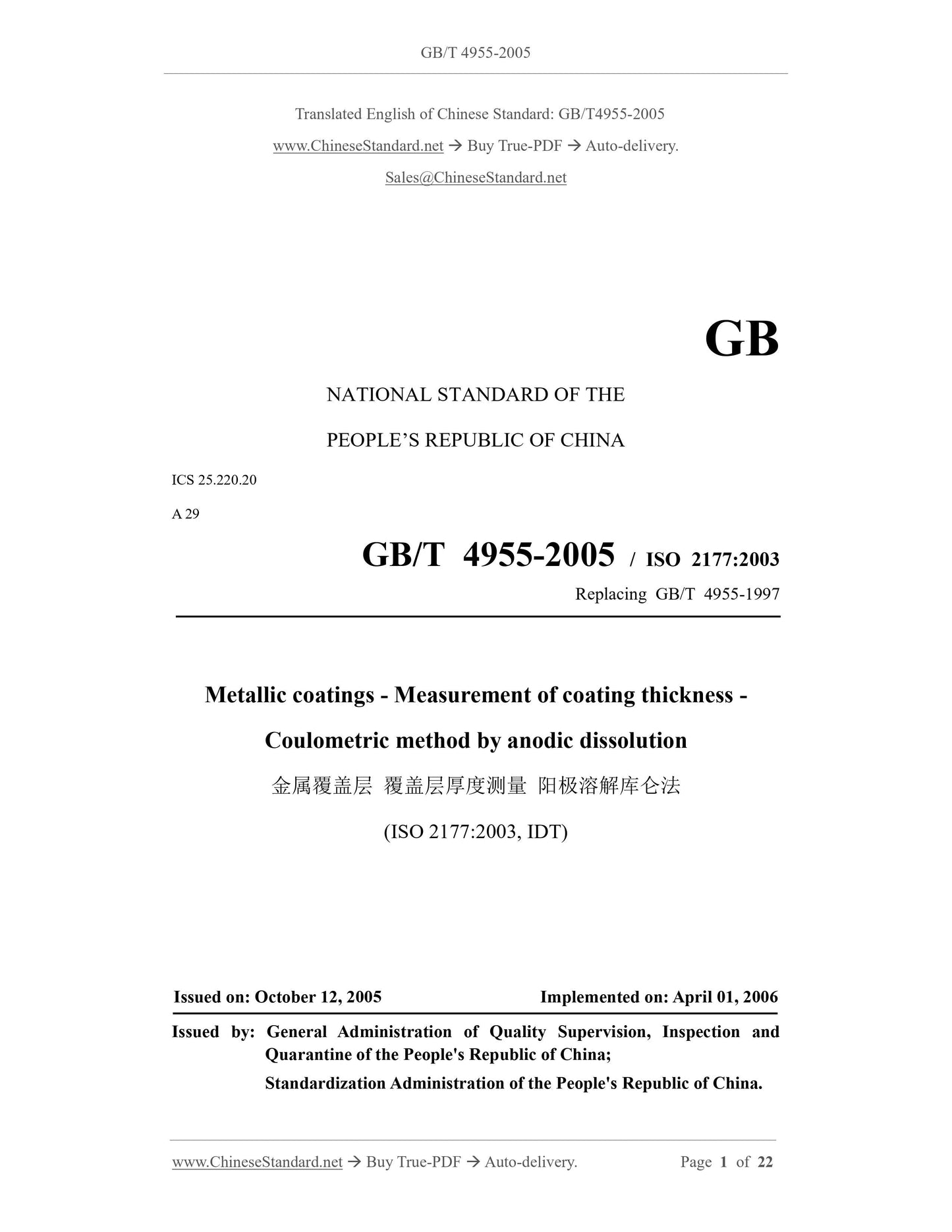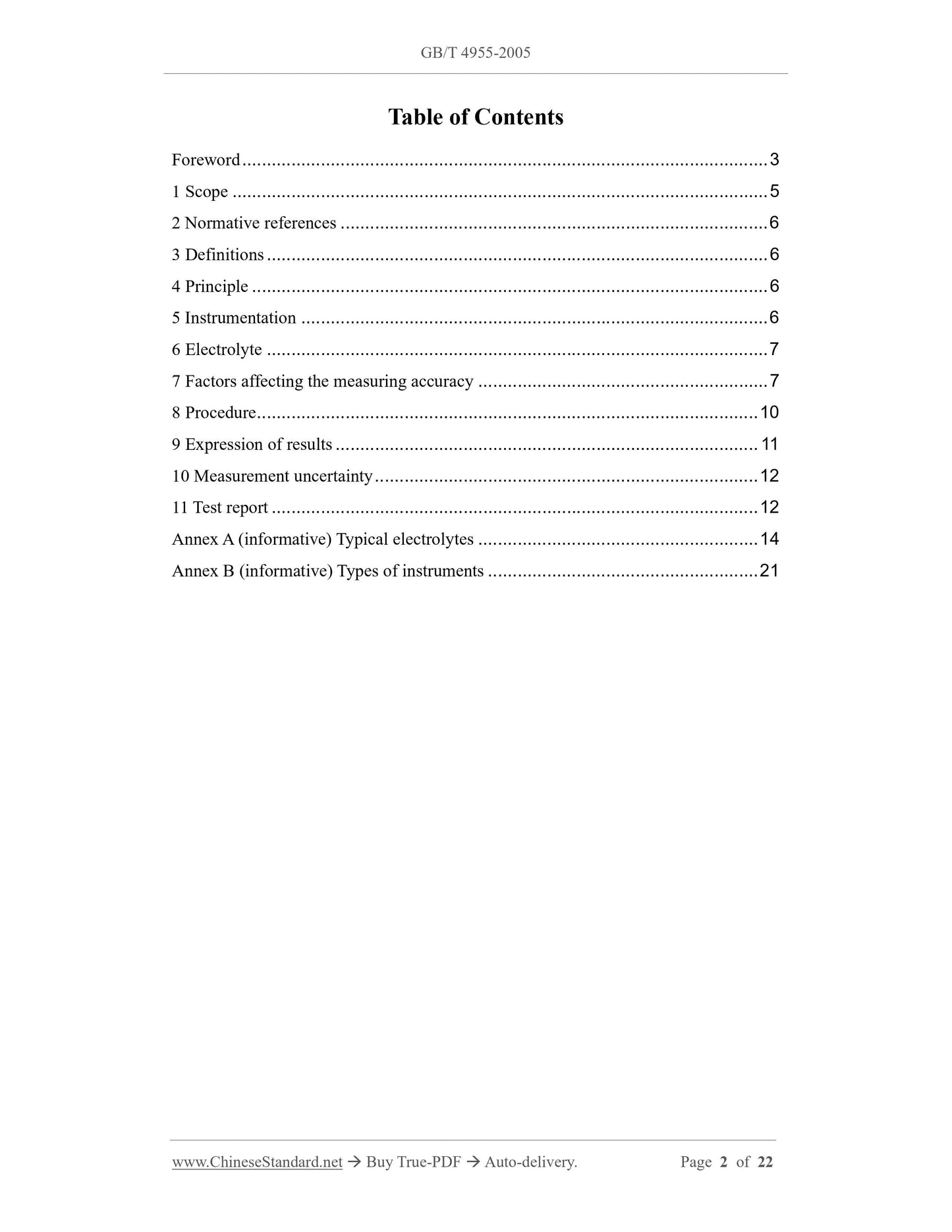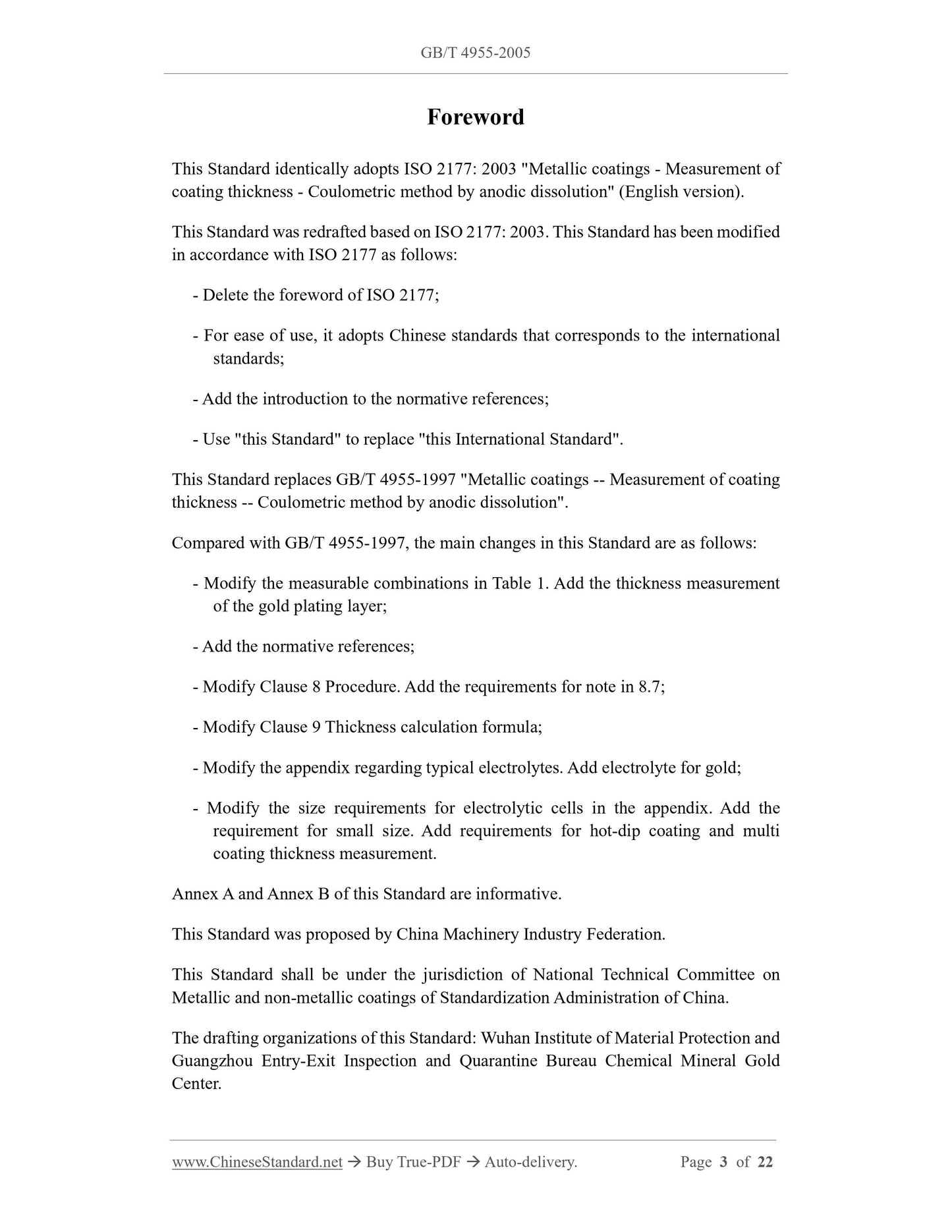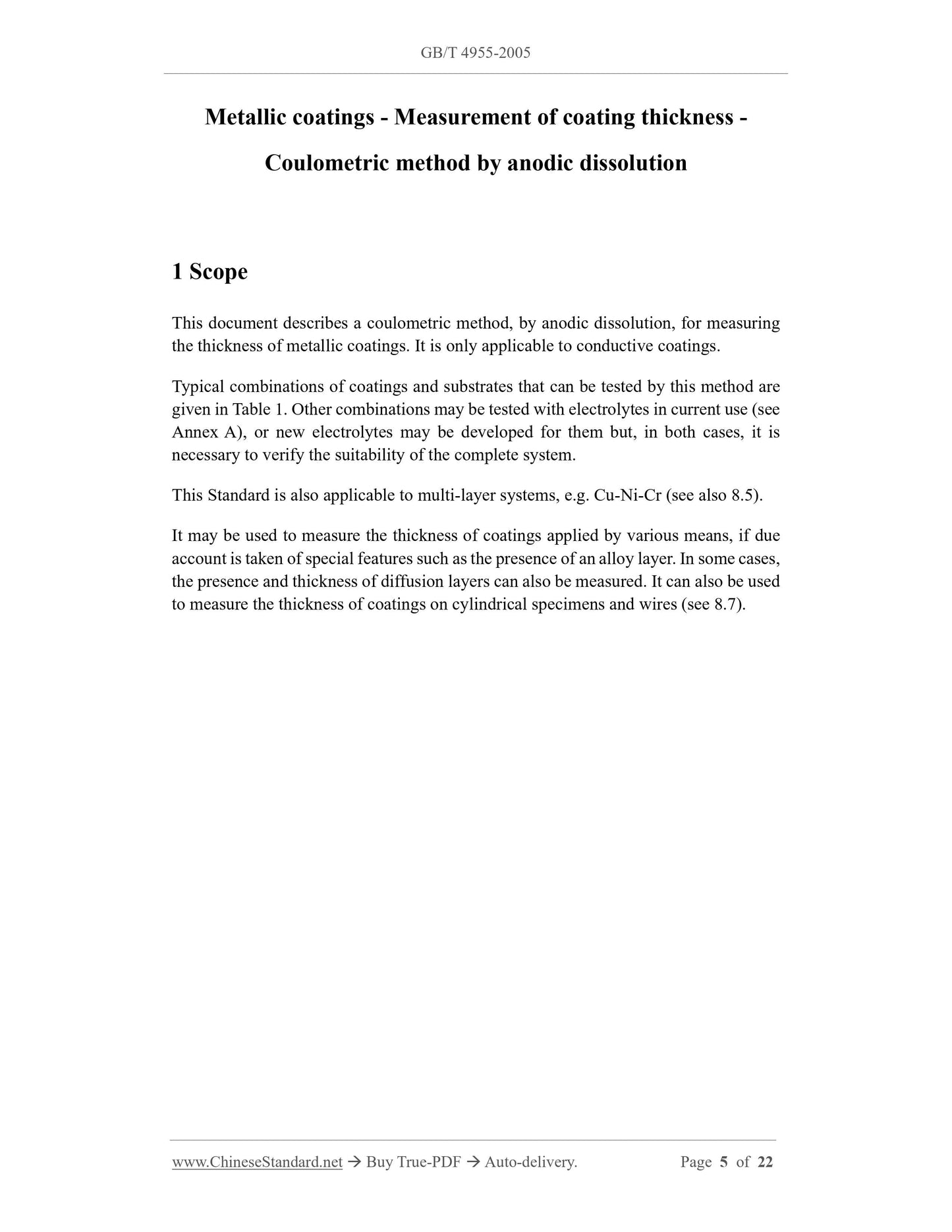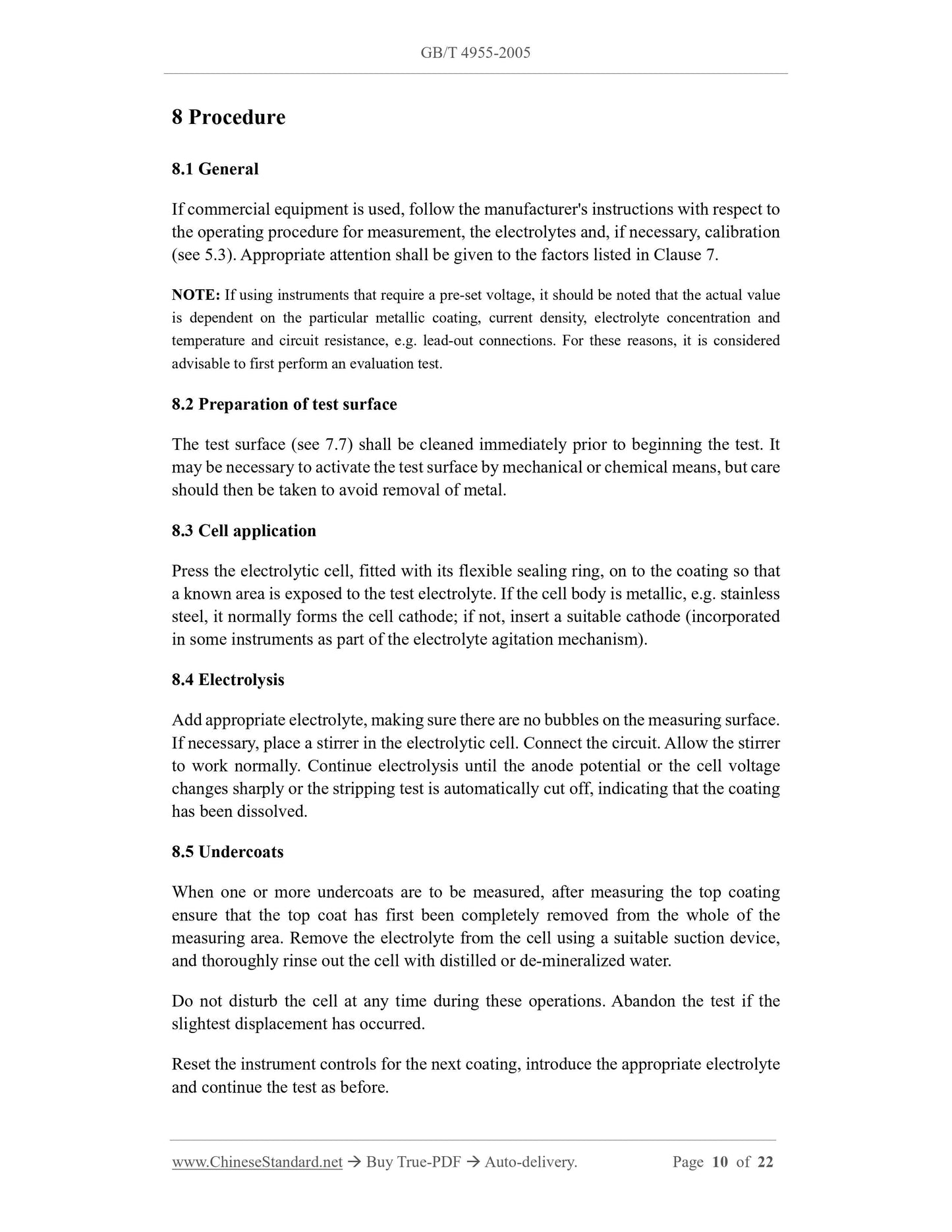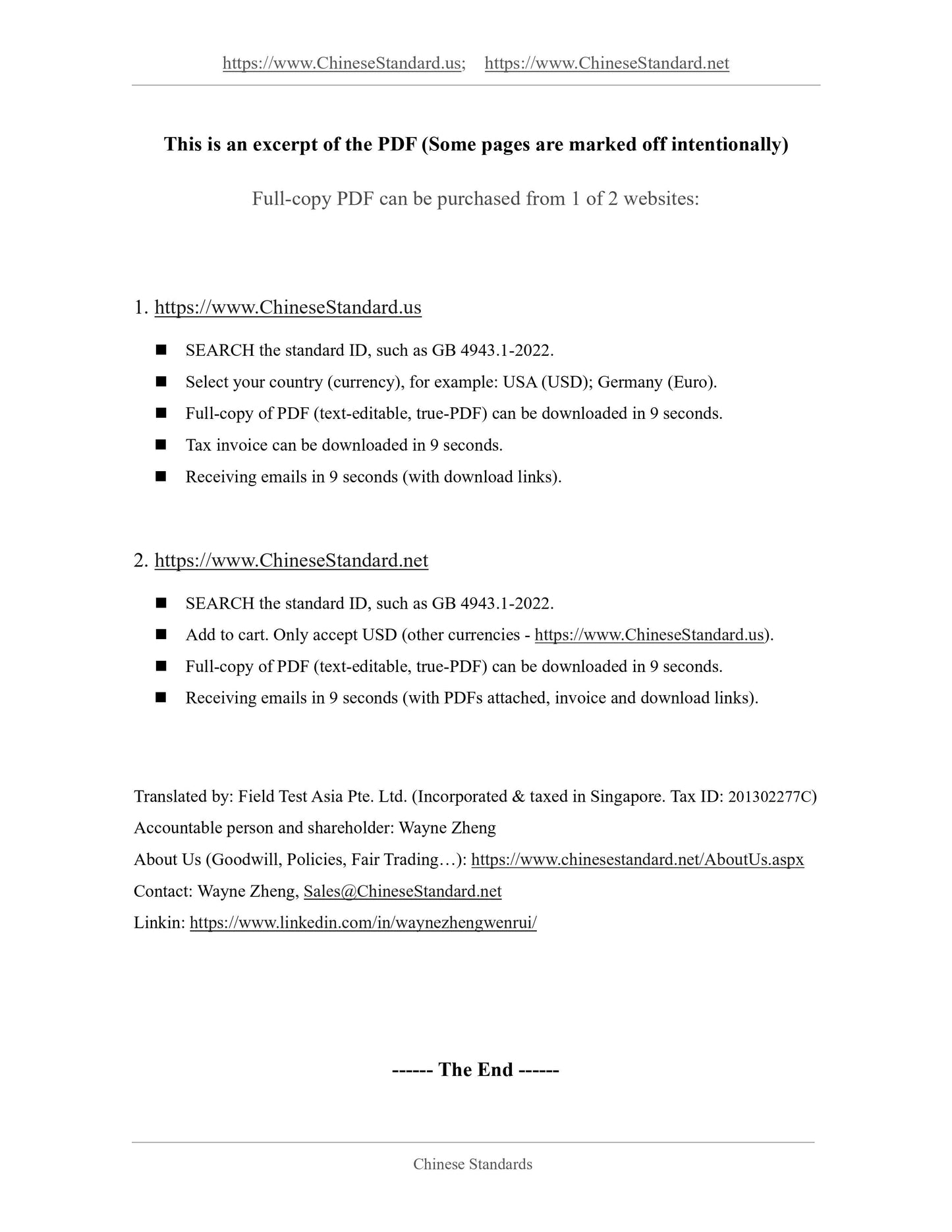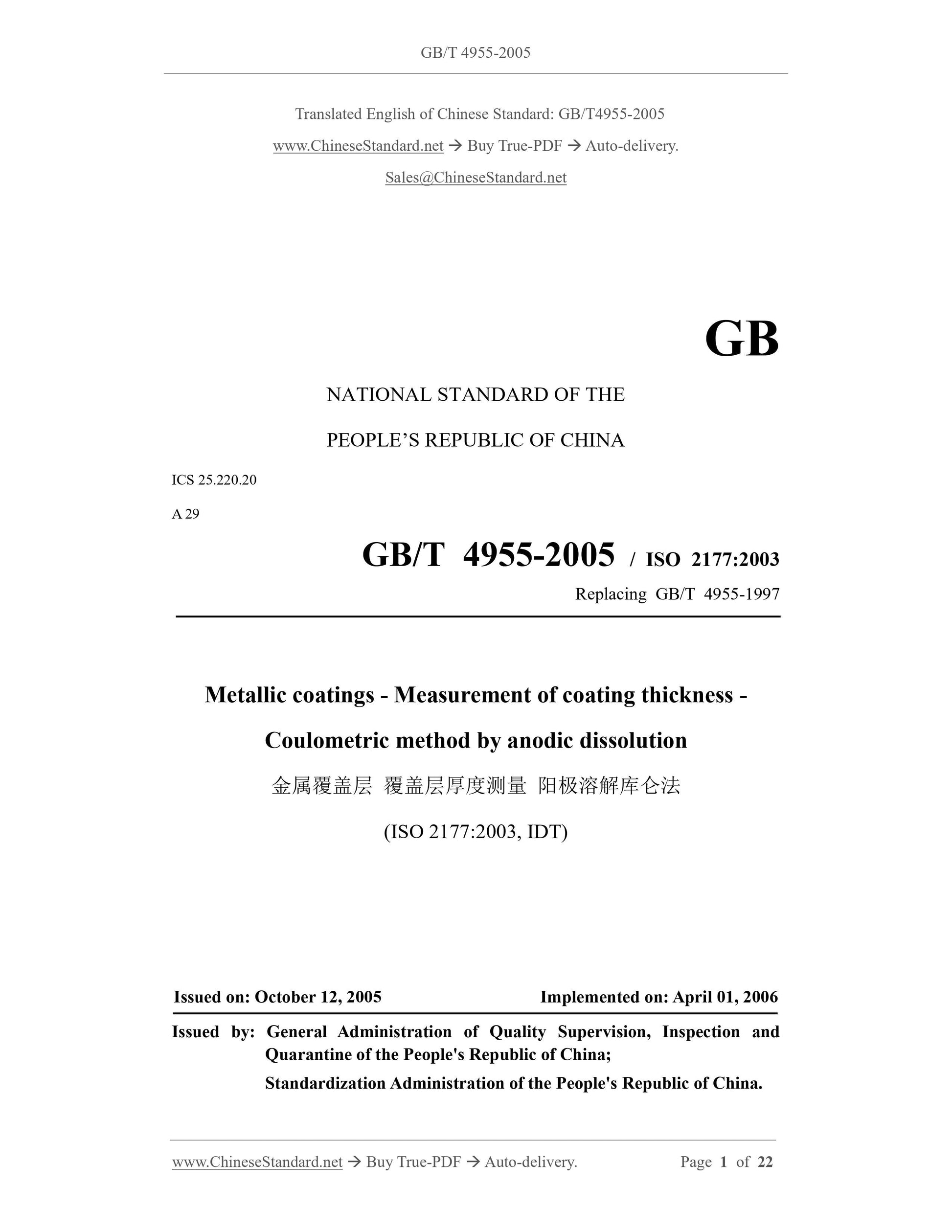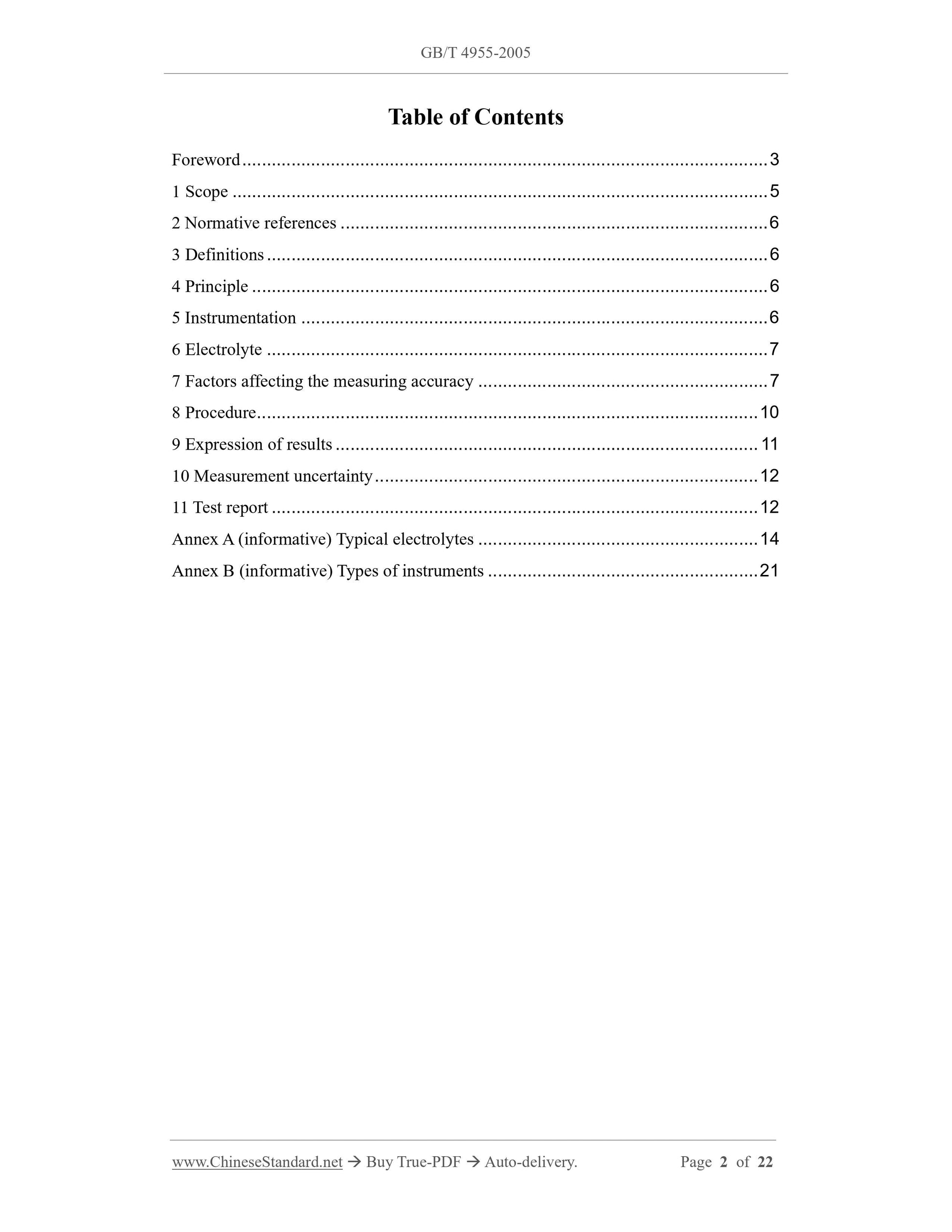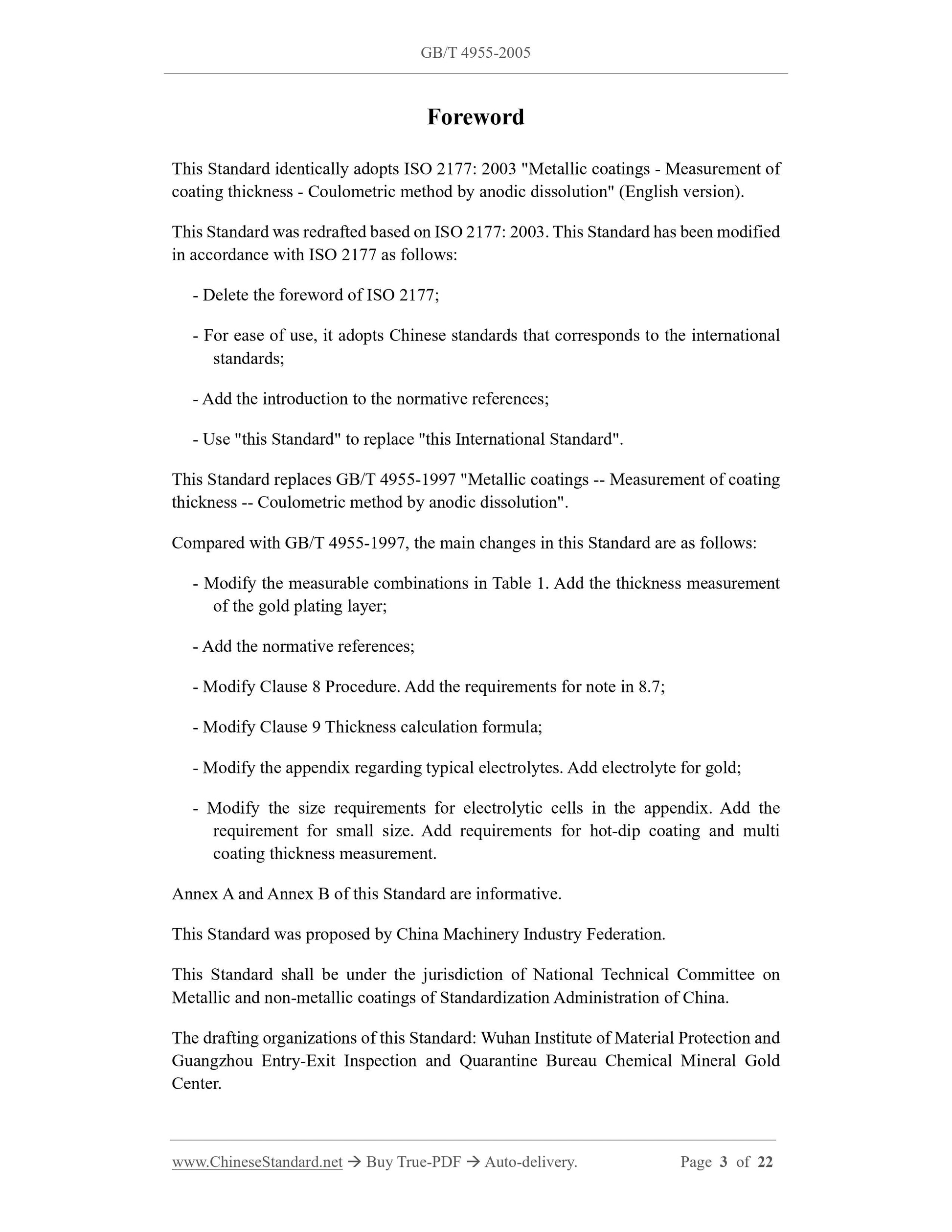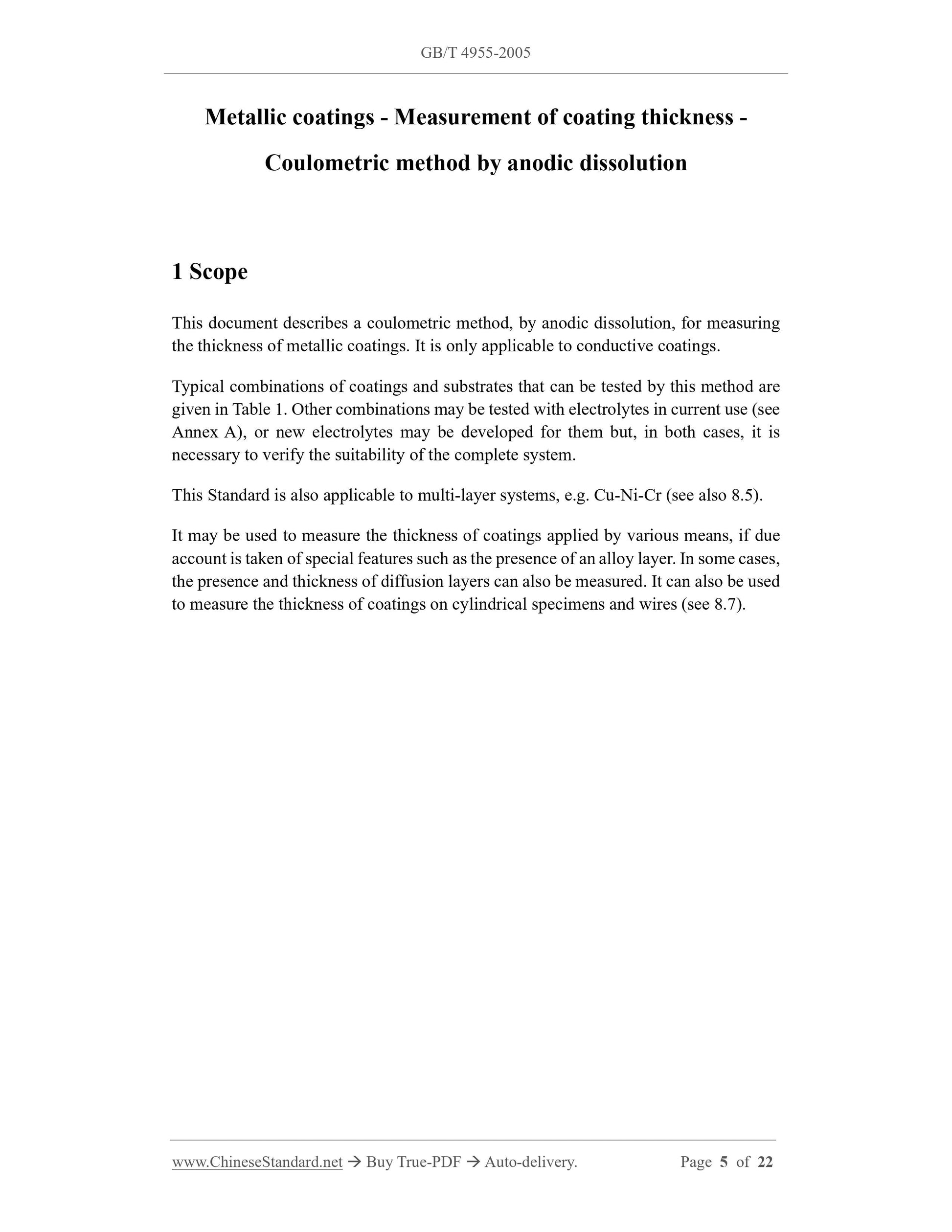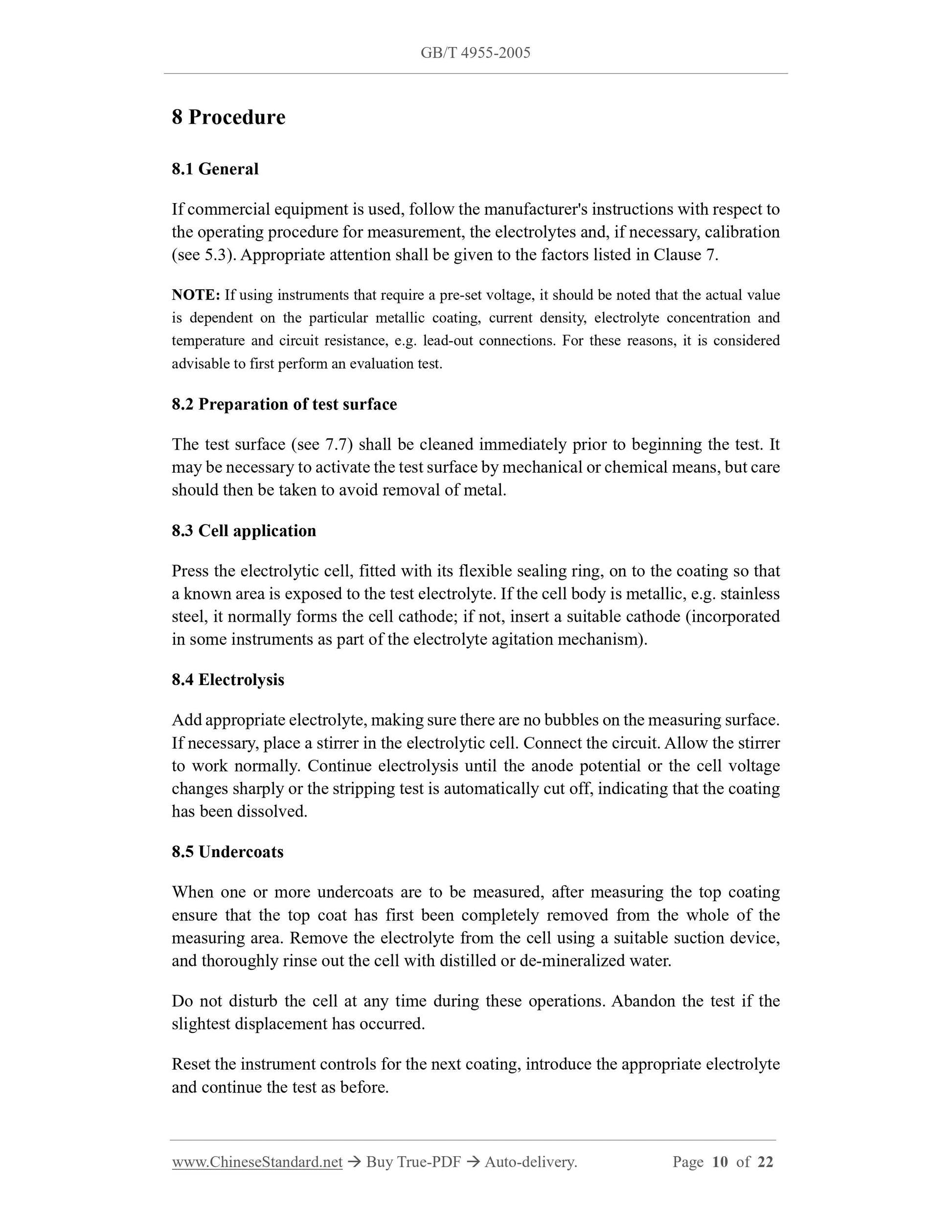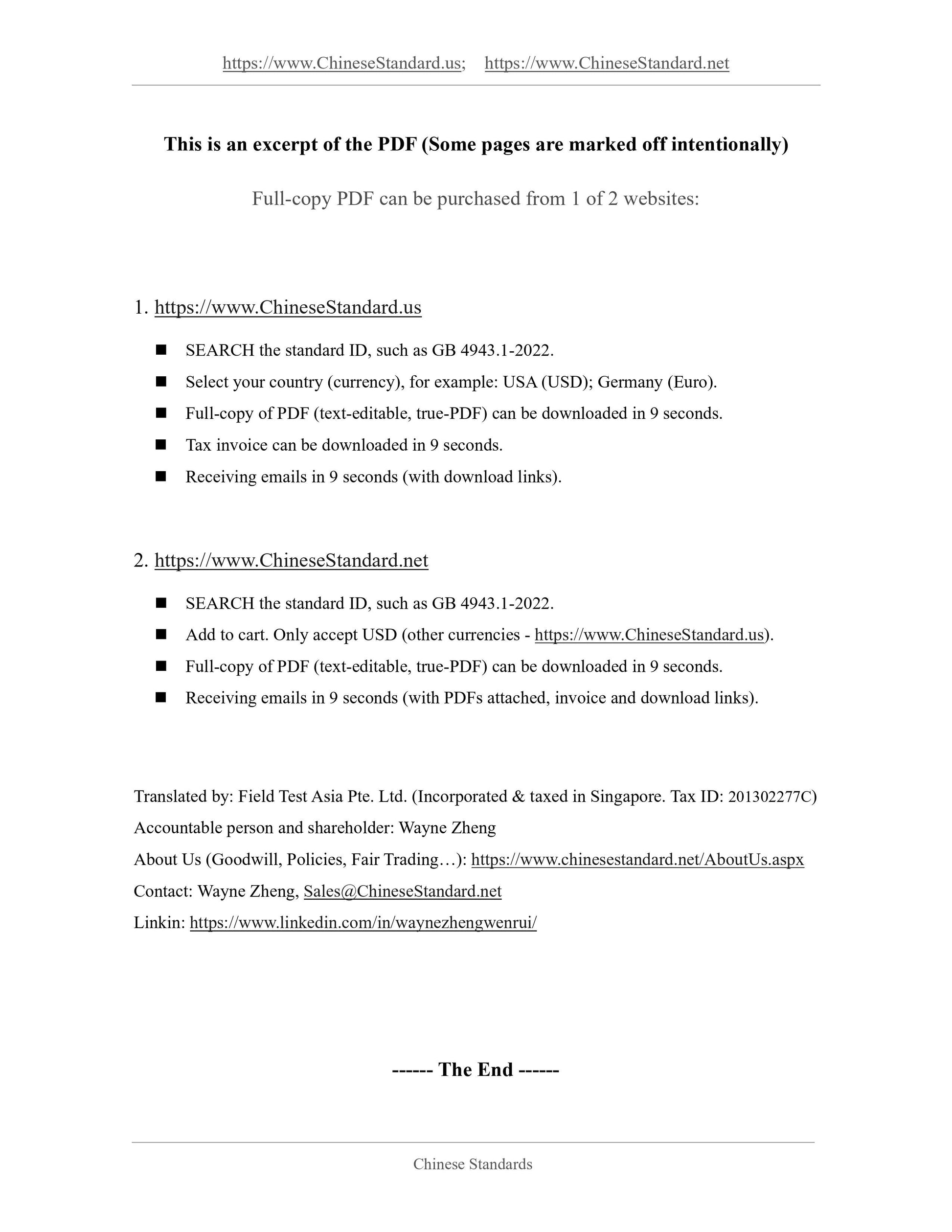1
/
of
6
www.ChineseStandard.us -- Field Test Asia Pte. Ltd.
GB/T 4955-2005 English PDF (GB/T4955-2005)
GB/T 4955-2005 English PDF (GB/T4955-2005)
Regular price
$160.00
Regular price
Sale price
$160.00
Unit price
/
per
Shipping calculated at checkout.
Couldn't load pickup availability
GB/T 4955-2005: Metallic coatings -- Measurement of coating thickness -- Coulometric method by anodic dissolution
Delivery: 9 seconds. Download (and Email) true-PDF + Invoice.Get Quotation: Click GB/T 4955-2005 (Self-service in 1-minute)
Newer / historical versions: GB/T 4955-2005
Preview True-PDF
Scope
This document describes a coulometric method, by anodic dissolution, for measuringthe thickness of metallic coatings. It is only applicable to conductive coatings.
Typical combinations of coatings and substrates that can be tested by this method are
given in Table 1.Other combinations may be tested with electrolytes in current use (see
Annex A), or new electrolytes may be developed for them but, in both cases, it is
necessary to verify the suitability of the complete system.
This Standard is also applicable to multi-layer systems, e.g. Cu-Ni-Cr (see also 8.5).
It may be used to measure the thickness of coatings applied by various means, if due
account is taken of special features such as the presence of an alloy layer. In some cases,
the presence and thickness of diffusion layers can also be measured. It can also be used
to measure the thickness of coatings on cylindrical specimens and wires (see 8.7).
Basic Data
| Standard ID | GB/T 4955-2005 (GB/T4955-2005) |
| Description (Translated English) | Metallic coatings. Measurement of coating thickness. Coulometric method by anodic dissolution |
| Sector / Industry | National Standard (Recommended) |
| Classification of Chinese Standard | A29 |
| Classification of International Standard | 25.220.20 |
| Word Count Estimation | 15,192 |
| Date of Issue | 2005-10-12 |
| Date of Implementation | 2006-04-01 |
| Older Standard (superseded by this standard) | GB/T 4955-1997 |
| Quoted Standard | GB/T 3138; GB/T 12334 |
| Adopted Standard | ISO 2177-2003, IDT |
| Regulation (derived from) | Announcement of Newly Approved National Standards 2006 No. 1 (No. 88 overall) |
| Issuing agency(ies) | General Administration of Quality Supervision, Inspection and Quarantine of the People Republic of China, China National Standardization Administration Committee |
| Summary | This standard specifies the measurement of the thickness of the metal coating layer anode melting coulometry. Law for the conductive cover layer only. This standard also applies to multi-layered system of measurement, such as Cu-Ni-Cr (see 8. 5). |
Share
